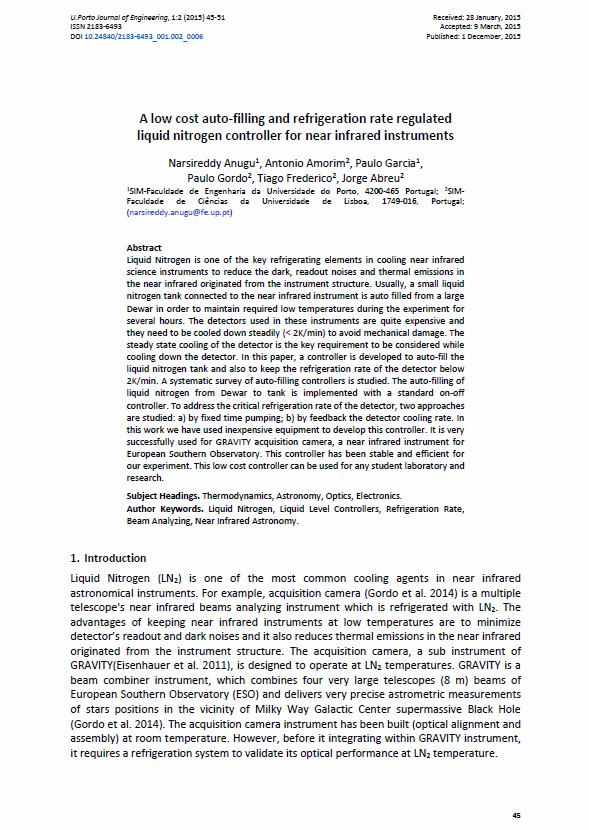A Low Cost Auto-filling and Refrigeration Rate Regulated Liquid Nitrogen Controller for Near Infrared Instruments
Main Article Content
Abstract
Liquid Nitrogen is one of the key refrigerating elements in cooling near infrared science instruments to reduce the dark, readout noises and thermal emissions in the near infrared originated from the instrument structure. Usually, a small liquid nitrogen tank connected to the near infrared instrument is auto filled from a large Dewar in order to maintain required low temperatures during the experiment for several hours. The detectors used in these instruments are quite expensive and they need to be cooled down steadily (< 2K/min) to avoid mechanical damage. The steady state cooling of the detector is the key requirement to be considered while cooling down the detector. In this paper, a controller is developed to auto-fill the liquid nitrogen tank and also to keep the refrigeration rate of the detector below 2K/min. A systematic survey of auto-filling controllers is studied. The auto-filling of liquid nitrogen from Dewar to tank is implemented with a standard on-off controller. To address the critical refrigeration rate of the detector, two approaches are studied: a) by fixed time pumping; b) by feedback the detector cooling rate. In this work we have used inexpensive equipment to develop this controller. It is very successfully used for GRAVITY acquisition camera, a near infrared instrument for European Southern Observatory. This controller has been stable and efficient for our experiment. This low cost controller can be used for any student laboratory and research.
Downloads
Article Details
Authors who publish with this journal agree to the following terms:
- Authors retain copyright and grant the journal right of first publication with the work simultaneously licensed under a Creative Commons Attribution License that allows others to share the work with an acknowledgement of the work's authorship and initial publication in this journal.
- Authors grant the journal the rights to provide the article in all forms and media so the article can be used on the latest technology even after publication and ensure its long-term preservation.
- Authors are able to enter into separate, additional contractual arrangements for the non-exclusive distribution of the journal's published version of the work (e.g., post it to an institutional repository or publish it in a book), with an acknowledgement of its initial publication in this journal.
- Authors are permitted and encouraged to post their work online (e.g., in institutional repositories or on their website) prior to and during the submission process, as it can lead to productive exchanges, as well as earlier and greater citation of published work (See The Effect of Open Access).

